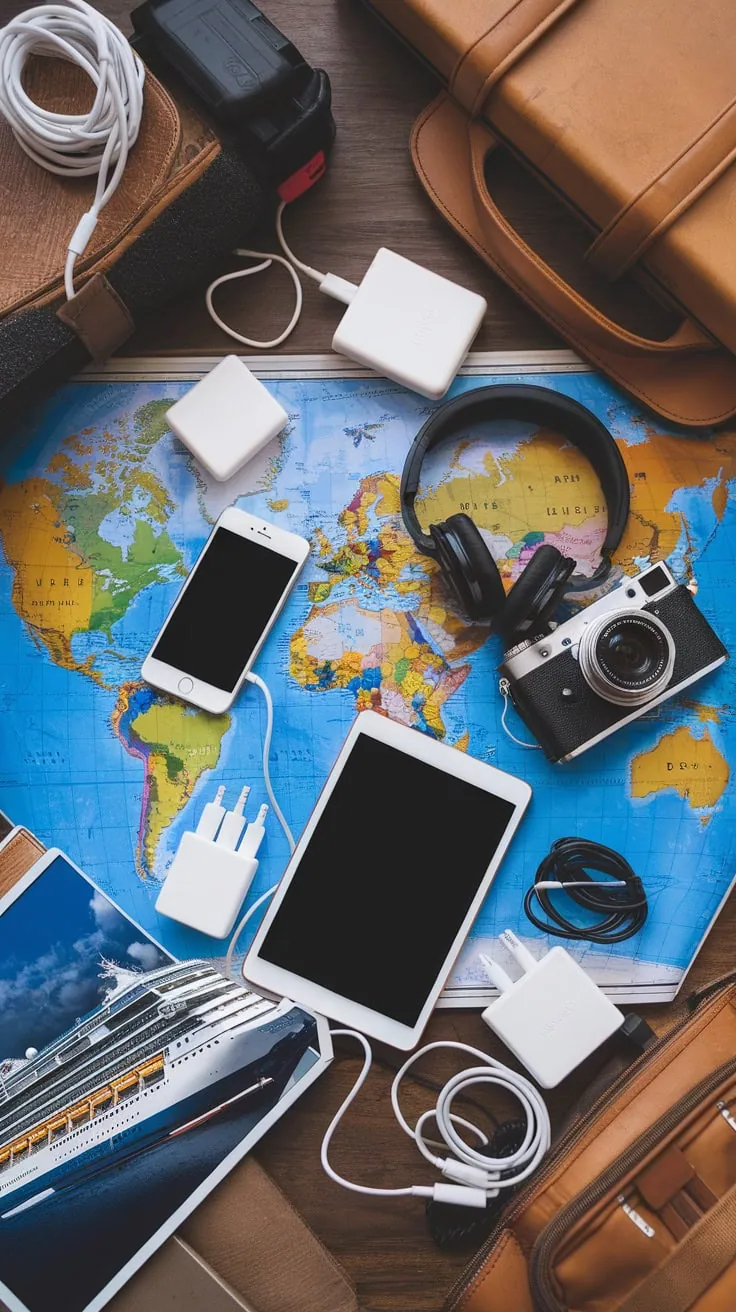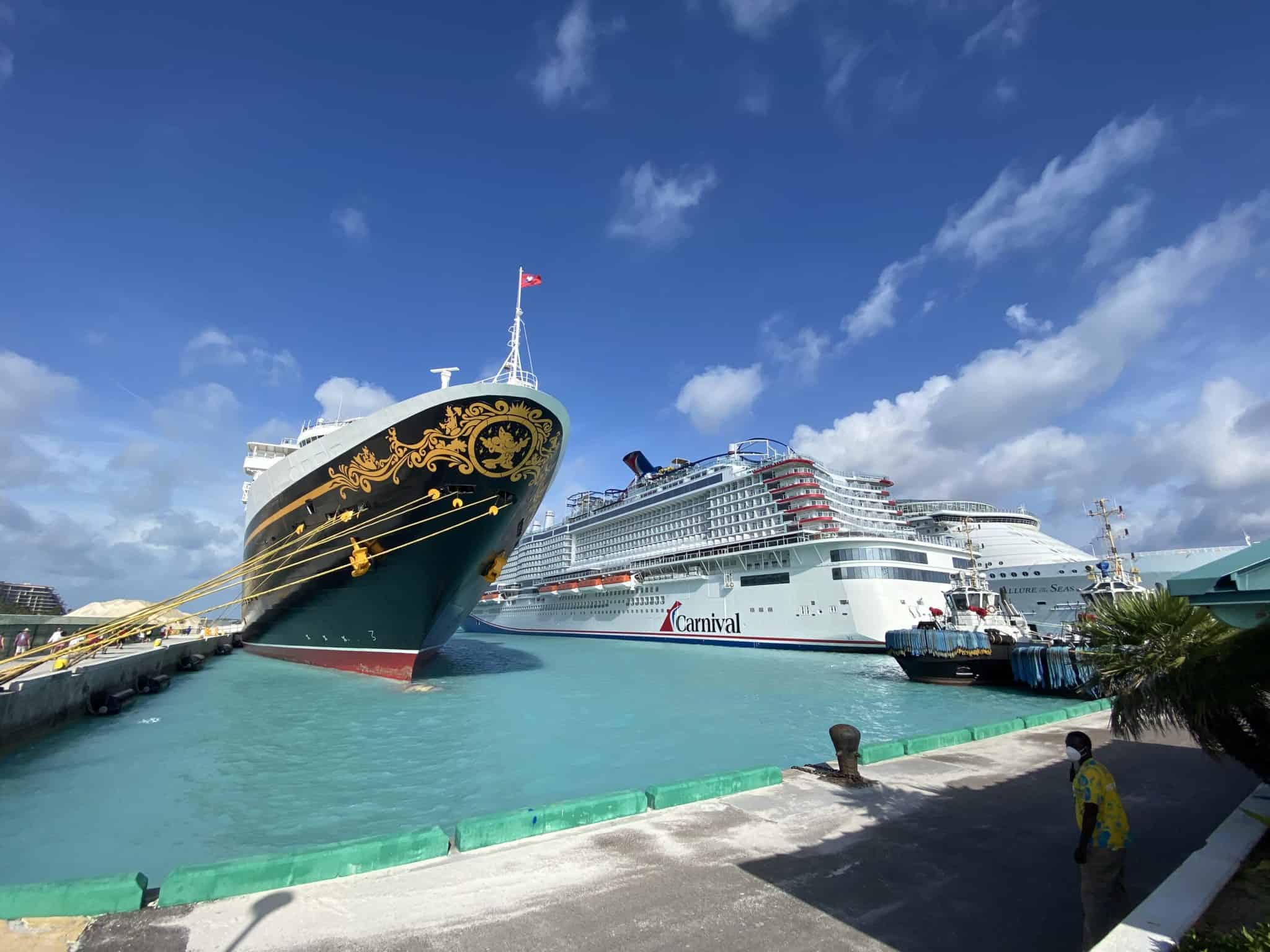The cruise terminal operates like a well-oiled machine, with cruise baggage handlers and shipboard staff working together to make a seamless experience for embarking and debarking passengers.

This team includes crew members onboard cleaning up to 2,000 rooms, luggage delivery crew members onboard, and pier-side workers, such as embarkation staff, parking attendants, line handlers, and baggage handlers.
I was fortunate to spend the morning with a baggage-handling team at a Florida port. Here are the seven things I learned.
1. $5 Per Large Bag is Customary
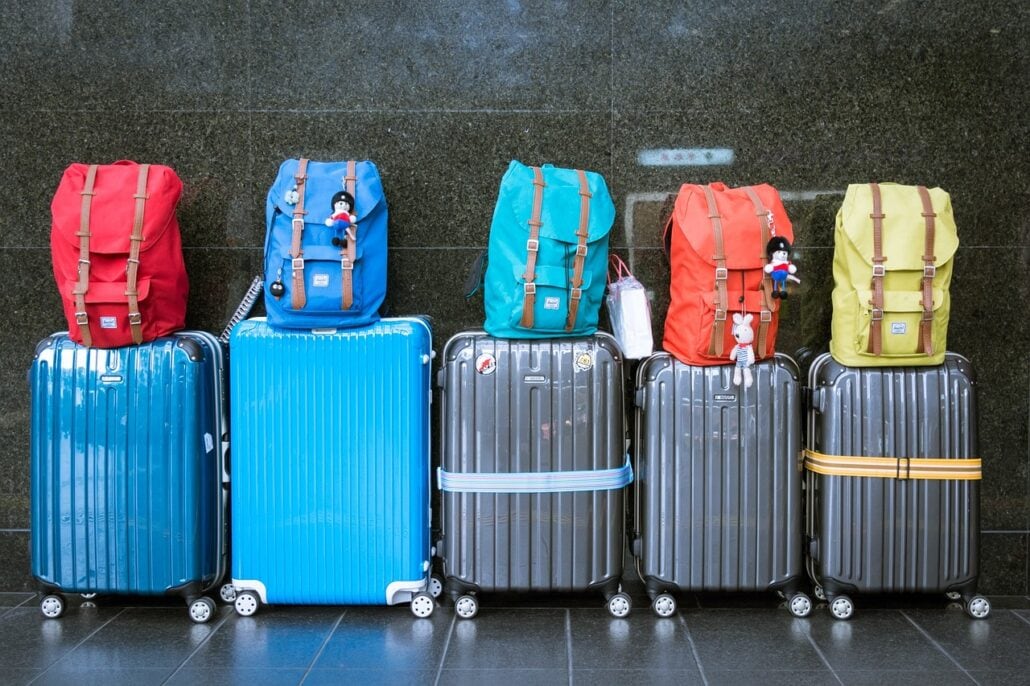
Standing beside a cruise porter as luggage piled up, I overheard a passenger say, “Why should I tip someone to move my bag four feet?” The porter just chuckled and shrugged. “If only it were that simple.”
Every bag goes through a process—far more than just being moved a few feet.
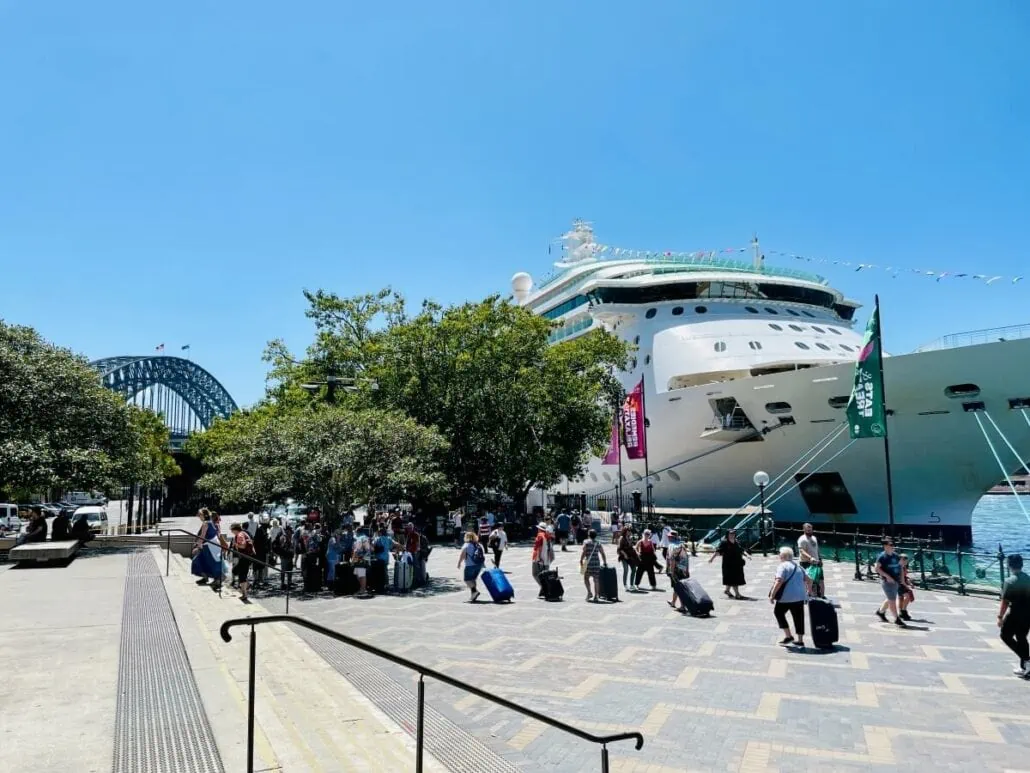
After passengers hand over their luggage, porters load each bag into a bin, sort it, crate it, and carefully load it onto the ship with a forklift.
As I spent the day shadowing the porters, I learned that $5 per large bag is the standard tip for cruise baggage handlers, and $1 is common for smaller bags.
I asked if people who don’t tip have their bags in a non-tipping area. He laughed and said, “No—but I’m sure there are a few bad apples in every group.”
2. All Checked Bags Get X-Rayed

Spending the day behind the scenes, I watched as each checked bag rolled through the X-ray machine. “Every single one,” a baggage handler said, looking at the screen. “We’re not just looking for alcohol; there’s a whole list of things we have to watch for.”
I noticed a few bags that set off alerts—one had a bottle-shaped object inside. “Some folks think they can sneak in a bottle of rum or two,” he said, shaking his head.
“But even if they try to bury it under clothes, the x-ray catches it every time.” It’s not just alcohol; it’s anything prohibited, from drones to fans, get flagged.
3. Your Bags Get Sniffed by K9
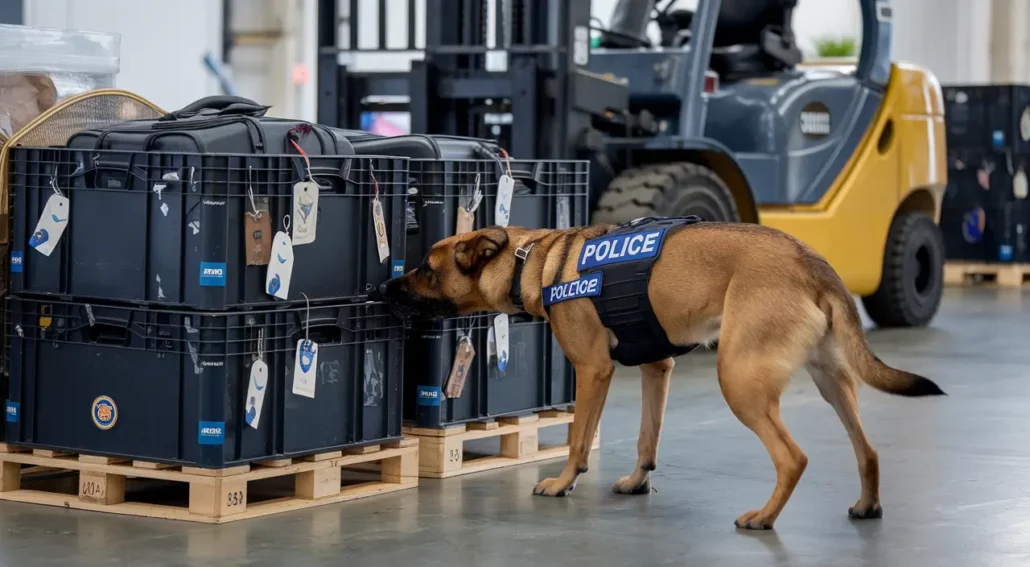
As I walked through the terminal with the baggage team, we passed rows of luggage crates lined up, waiting to be loaded onto the ship.
A K-9 officer approached the luggage crate with a German shepherd named Thor, whose nose was working overtime as it sniffed each crate. Fortunately, all the bags before us were cleared for processing and brought to the ship.
Read More: Can you bring marijuana on a cruise ship?
“These dogs are amazing,” one of the handlers whispered to me. “They can pick up everything from drugs to weapons—and even fruit.”
4. They Do Not Control Baggage Arrival Time

Standing at the loading zone, I watched bags pile up, waiting to be transferred from the terminal to the ship.
“People always think it’s our fault if their luggage is delayed,” the handler said. “But there’s more going on than just moving bags from A to B.”
Baggage delays can happen for several reasons. Sometimes, a bag gets flagged in customs and pulled for a closer look, especially if there’s alcohol inside.
Read More: 25 First Time Cruise Tips
Other times, there’s a backlog at the loading zone, or the crew on board hasn’t caught up with the crates being loaded onto the ship. It’s the domino effect.
“Once it’s on the ship, it’s out of our hands,” he explained. The crew takes delivery over once it leaves the pier and gets onboard the ship.
5. Protect Fragile Items
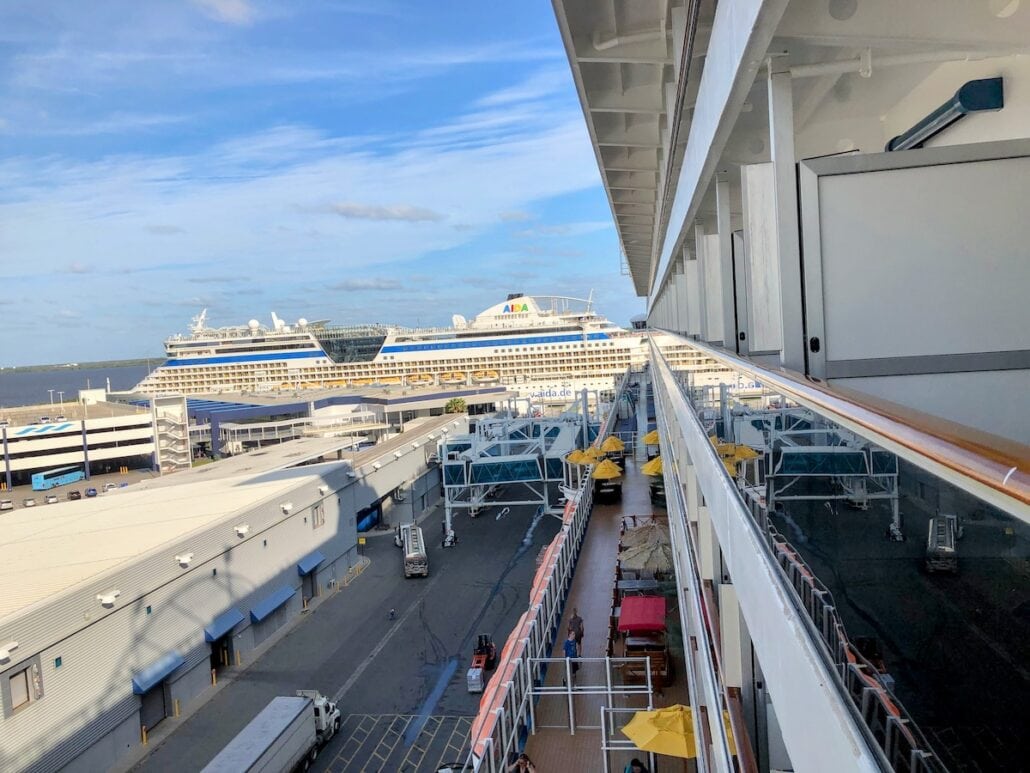
Watching bags being loaded into giant metal crates, I noticed how bags were stacked in layers.
“We do our best, but when these crates are full, the bags at the bottom carry some serious weight,” one of the porters explained. “The bag on the bottom could have over 1,000 pounds pressing down on it.”
The porter gave me a tip: if you have fragile items, like baby monitors, big bottles of shampoo, or anything that could easily break or bust, pack them wisely.
“Put delicate stuff in the center of your bag, maybe even inside shoes for extra padding,” he said. Better yet, keep them in your carry-on!
6. Most Baggage Handlers Union Workers
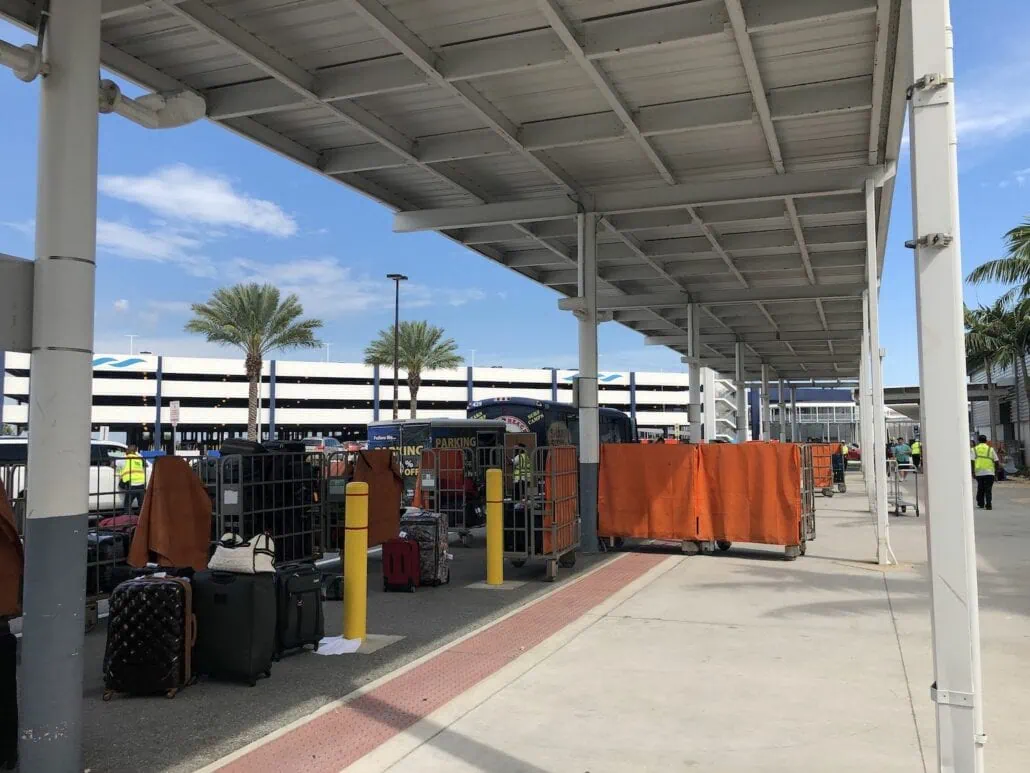
As I spent the day with the baggage handlers, I quickly learned these workers are not just dockside laborers—they’re highly trained union workers.
“People think we’re just schlepping bags,” one handler laughed, “but there’s a whole system, and it’s good work. Some of these guys make six figures.”
Most of these porters belong to unions (The International Longshoremen’s Association), which means they’re well-compensated, represented, and well-trained.
7. Cruise Lines Can Delay Your Disembarkation
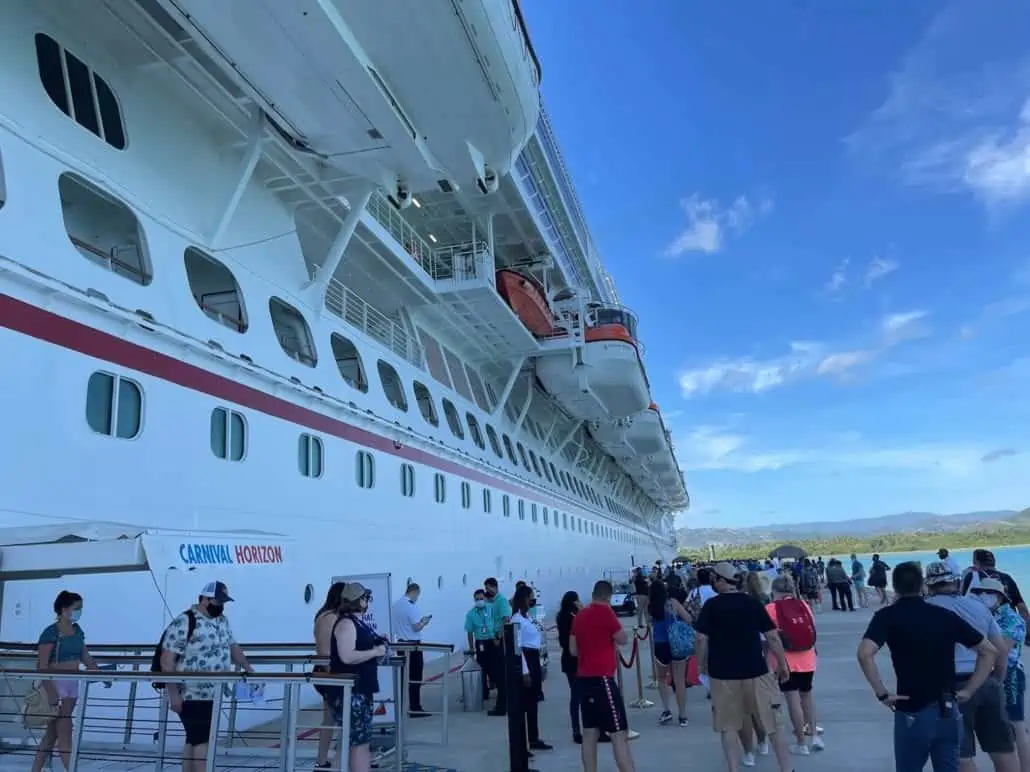
As I watched passengers grow restless during a long disembarkation, a baggage handler leaned over and shared an inside scoop. “People always think it’s on us when things slow down,” he said, “but the real issue is the customs process. Though it’s much faster now than 10 years ago because of facial recognition.”
Read More: Carnival Continues to Use Drug Dogs
The cruise line is allocated only a certain number of U.S. Customs agents, and any additional agents are an extra cost to the cruise line. “They don’t always want to pay for more,” he explained, which can lead to bottlenecks when thousands of passengers are trying to exit the ship at once.

Customs agents also have their schedules, taking breaks as needed, which can add to the delays. “It’s not exactly a fast process,” he chuckled. “So when bags are held up, it’s usually not our doing.”
After seeing it firsthand, it’s clear that the baggage team is just one part of the larger machine, and much of the timing is decided by the dock workers, delivery drivers, cruise line, and customs logistics.
As my day with a cruise baggage handler ended, I left with a new-found respect for the cruise industry’s behind-the-scenes workers.
Read More: Behind the Scenes of Carnival Jubilee



